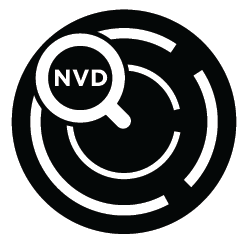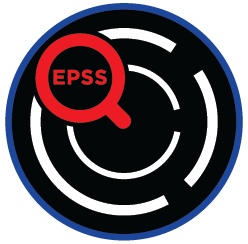

DarCache NVD: Comprehensive Vulnerability Details for Foundational Security
Deep Dive into Vulnerabilities: Unpacking Technical Details for Core Security Insight
The National Vulnerability Database (NVD) Intelligence Repository (DarCache NVD) is a fundamental component of ThreatNG's DarCache Vulnerability, which is an integral part of ThreatNG's all-in-one external attack surface management, digital risk protection, and security ratings solution platform. DarCache NVD provides detailed information about vulnerabilities, including their technical characteristics, severity, and potential impact. By offering insights into attack complexity, attack interaction, attack vector, impact scores (availability, confidentiality, integrity), CVSS scores, and severity levels, DarCache NVD delivers a deep understanding of each vulnerability. This foundational intelligence is crucial for enabling organizations to make smarter security decisions and effectively allocate resources to protect their digital assets, forming the bedrock upon which ThreatNG builds its proactive and holistic approach to managing external risks and vulnerabilities.

Comprehensive Vulnerability Insight: Quantifying Risk and Guiding Strategic Defense
Foundational and Comprehensive Vulnerability Understanding
DarCache NVD provides the essential technical details, standardized identifiers (CVEs), and in-depth impact assessments (Confidentiality, Integrity, Availability) for every discovered vulnerability. This forms the bedrock of ThreatNG's entire security analysis, ensuring a thorough and objective understanding of a vulnerability and its potential consequences across the external attack surface, digital assets, and third-party environments.
Structured Risk Quantification and Prioritization
By providing CVSS Scores and Severity levels, DarCache NVD enables a standardized and quantifiable measure of vulnerability severity. This allows ThreatNG to perform initial, structured prioritization of risks, guiding the allocation of resources to address the most technically severe flaws and providing objective justification for security ratings and risk assessments.
Enhanced Remediation Guidance and Strategic Planning
The detailed descriptions, attack characteristics (complexity, vector, interaction), and impact information from DarCache NVD provide crucial insights for developing effective remediation strategies. This comprehensive technical understanding supports data-driven decision-making for security investments, helps plan post-acquisition security integration, and allows for clear, technical communication about risks to all stakeholders.
External Vulnerability Details: Foundational Security for Your Digital Presence

Foundational Vulnerability Identification: DarCache NVD provides the core technical details and standardized identifiers (CVEs) for vulnerabilities discovered during ThreatNG's purely external, unauthenticated discovery. This allows for a comprehensive initial understanding of every identified flaw on the external attack surface, forming the basis for further assessment.
Detailed Impact Analysis for Exposed Assets: With information on attack complexity, attack vector, and confidentiality, integrity, and availability impacts, DarCache NVD enables ThreatNG to perform in-depth analysis of the potential consequences of exploiting vulnerabilities on exposed web applications, subdomains, and sensitive ports. This goes beyond mere detection to understand the depth of the threat.
Structured Prioritization Based on Severity: NVD's CVSS Score and Severity provide a standardized, numerical, and qualitative measure of vulnerability severity. Integration with ThreatNG's overall EASM capabilities allows for initial, structured prioritization of risks identified on the external attack surface, ensuring that the most severe technical flaws are flagged.
Comprehensive Understanding of Foundational Digital Risks: DarCache NVD provides details and technical characteristics of vulnerabilities that could lead to digital risks like "Brand Damage Susceptibility" or "Data Leak Susceptibility". This allows ThreatNG to trace digital risks to their root technical causes in detail.
Contextualized Threat Modeling for Digital Assets: NVD data helps ThreatNG contextualize potential digital risks by detailing the attack complexity and vector. For instance, when analyzing "Breach & Ransomware Susceptibility" or "Cyber Risk Exposure", NVD provides insight into how identified vulnerabilities might be exploited, informing more precise threat models for digital assets.
Robust Basis for Digital Risk Mitigation Strategies: The detailed technical information from NVD (including impact scores and descriptions) provides a solid foundation for developing effective digital risk mitigation strategies. This ensures that recommended actions, like those derived from "Domain Intelligence" or "Dark Web Presence", comprehensively address the underlying technical vulnerabilities.
Objective Basis for Foundational Security Scores: ThreatNG's security ratings, including "Cyber Risk Exposure" and others, use NVD data as a fundamental input for technical vulnerability assessment. The CVSS Score and Severity provide an objective, standardized measure of a vulnerability's impact, which is crucial for calculating accurate security ratings.
Granular Insight into Rating Factors: NVD's detailed fields provide granular insights into the factors contributing to an organization's overall score. This helps in understanding the technical characteristics and potential impact of each vulnerability.
Comprehensive Justification for Rating Deficiencies: When ThreatNG's security ratings highlight deficiencies, the detailed NVD information offers insights into the identified risks. This allows for precise, technically detailed explanations of why specific vulnerabilities lower a security rating, aiding in focused improvement efforts.

Brand Protection
Technical Root Cause Analysis for Brand-Affecting Vulnerabilities: DarCache NVD provides the underlying technical details for vulnerabilities that could lead to "Brand Damage Susceptibility". This allows ThreatNG to pinpoint specific technical flaws that could enable attacks impacting brand reputation.
Informed Prevention of Brand-Related Exploits: Gaining insights into the various strategies and challenges tied to vulnerabilities related to an organization's brand presence (e.g., website, mobile apps) allows for implementing targeted preventative measures. This approach extends beyond general brand monitoring to encompass specific technical defenses.
Standardized Language for Internal & External Stakeholders: Using CVEs (a key NVD identifier) provides a "Standardized Language" for discussing vulnerabilities that could affect brand reputation. This enhances communication and collaboration among security, legal, and PR teams when addressing potential brand-damaging cyber incidents.
Cloud & SaaS Exposure Management
Detailed Vulnerability Analysis for Cloud/SaaS Assets: DarCache NVD provides comprehensive information on vulnerabilities that could affect "Cloud and SaaS Exposure", including public cloud buckets (Amazon AWS, Microsoft Azure, Google Cloud Platform) and SaaS implementations (Salesforce, Slack, etc.). This allows for a thorough technical assessment of these environments.
In-Depth Impact Assessment of Cloud/SaaS Vulnerabilities: NVD's impact scores (Confidentiality, Integrity, Availability) allow ThreatNG to assess the potential consequences of vulnerabilities affecting cloud services and SaaS solutions. This helps determine the risk level for sensitive data accessed via these platforms.
Foundation for Secure Cloud/SaaS Configuration: By understanding the specific technical characteristics of NVD vulnerabilities, organizations can use ThreatNG's insights to implement more secure configurations and controls within their cloud services and SaaS applications, mitigating known technical weaknesses.
Due Diligence
Foundational Vulnerability Discovery in Target Systems: During due diligence, DarCache NVD provides the core data for identifying and understanding vulnerabilities within a target organization's systems and external attack surface. This forms the initial, comprehensive scan for known technical flaws.
Detailed Risk Quantification for Investment Decisions: The CVSS Score and Severity from NVD allow for a standardized quantification of the technical risks associated with vulnerabilities in a target company. This objective data clearly shows potential liabilities, supporting informed investment and partnership decisions.
Comprehensive Baseline for Post-Acquisition Security: NVD provides a detailed baseline of known vulnerabilities within an acquired entity's environment. This information, including attack complexities and impacts, is invaluable for planning post-acquisition security integration and prioritization of remediation efforts.
Third-Party Risk Management
Comprehensive Technical Assessment of Vendor Vulnerabilities: DarCache NVD provides the foundational technical details for vulnerabilities identified in a vendor's "Technology Stack" or "Cloud and SaaS Exposure". This enables a thorough technical assessment of a third party's inherent vulnerability posture.
Structured Risk Quantification for Third-Party Exposures: Using NVD's CVSS Score and Severity, ThreatNG can provide a standardized and quantifiable measure of vulnerability severity in third-party systems. This aids in objectively assessing "Supply Chain & Third Party Exposure".
Informative Basis for Vendor Remediation Requirements: The comprehensive details and technical information from NVD enable ThreatNG to offer clear and instructive guidance to vendors on how to remediate vulnerabilities discovered in their products or services, promoting a more effective supply chain security.
NVD Intelligence Repository (DarCache NVD) FAQ
-
An NVD Intelligence Repository is a comprehensive cybersecurity vulnerability database that integrates vulnerability data from CVE (Common Vulnerabilities and Exposures) entries with additional information such as severity scores, impact metrics, and affected products. The U.S. government maintains it and provides a standardized way to categorize and describe vulnerabilities.
Its general importance stems from its ability to:
Provide Standardized Vulnerability Information: NVD uses CVEs, unique identifiers for specific vulnerabilities, to provide a standardized way to refer to them. This standardization allows for consistently referencing security flaws across different databases, tools, and organizations.
Offer Detailed Technical Characteristics: It provides in-depth technical details about each vulnerability, including attack complexity, interaction, and vector. This information is crucial for understanding how a vulnerability can be exploited.
Quantify Severity and Impact: NVD typically includes CVSS (Common Vulnerability Scoring System) scores and qualitative severity ratings (e.g., Critical, High, Medium, Low). It also measures the impact on the affected resource's confidentiality, integrity, and availability. This helps organizations assess the potential damage a vulnerability could cause.
Support Risk Assessment: NVD data is fundamental for conducting thorough risk assessments and understanding an organization's exposure by describing the vulnerability and its potential impact.
Aid in Compliance and Auditing: Its standardized nature and comprehensive data make it a valuable resource for organizations to demonstrate compliance with various security frameworks and regulations.
-
The NVD Intelligence Repository (DarCache NVD) is a fundamental component of ThreatNG's broader DarCache Vulnerability because:
Forms the Foundational Data Layer: DarCache NVD provides the initial, comprehensive technical details for every vulnerability discovered or analyzed by ThreatNG. This foundational information is essential for building a complete understanding of a vulnerability's characteristics and potential impact.
Enables Comprehensive Risk Scoring: ThreatNG's DarCache Vulnerability combines NVD's CVSS scores and impact metrics with other crucial data from EPSS (exploit prediction), KEV (known exploited vulnerabilities), and Proof-of-Concept (PoC) exploits (DarCache eXploit). This integration allows for a nuanced and holistic risk-driven prioritization framework, moving beyond just severity to include real-world exploitability and active threats.
Supports In-Depth Analysis: The detailed NVD information, including attack complexity, attack interaction, and attack vector, allows ThreatNG's overall vulnerability intelligence to provide a deep understanding of each vulnerability's technical characteristics and potential impact.
-
DarCache NVD significantly enhances ThreatNG's all-in-one external attack surface management, digital risk protection, and security ratings solution by:
Informing External Assessment Ratings: NVD data is a core input for ThreatNG's various assessment ratings, such as "Web Application Hijack Susceptibility", "Subdomain Takeover Susceptibility", and "Cyber Risk Exposure". It provides the essential technical context for analyzing potential entry points and vulnerabilities on the external attack surface.
Strengthening Digital Risk Protection: NVD details about vulnerabilities contribute to ThreatNG's analysis of "Data Leak Susceptibility" and "Brand Damage Susceptibility". By understanding the technical nature and impact of underlying vulnerabilities, ThreatNG can better assess the risks to digital assets and intellectual property.
Providing Objective Security Ratings: The CVSS Score and Severity from NVD are directly factored into ThreatNG's security ratings. This ensures that the ratings are based on objective, standardized measures of vulnerability impact, providing a clear and justifiable assessment of an organization's security posture.
Enhancing Reporting and Knowledgebase: NVD information is crucial for the "Knowledgebase" embedded throughout ThreatNG's solution and reports. It provides the "Reasoning" and detailed "Description" for identified risks, helping organizations better understand their security posture and make informed decisions about risk mitigation.
Facilitating Detailed Investigations: ThreatNG's "Advanced Search" capabilities use NVD data as a primary source for detailed investigations of discovery and assessment results, allowing users to quickly find specific data and identify risks on their external attack surface.
-
An NVD Intelligence Repository like DarCache NVD is essential for a wide range of stakeholders:
Security Analysts and Practitioners: They rely on NVD for detailed technical descriptions, attack vectors, and impact scores to understand vulnerabilities, assess their relevance to their environment, and plan remediation.
Vulnerability Management Teams: NVD is their primary reference for identifying, categorizing, and prioritizing vulnerabilities based on severity and technical characteristics. This enables efficient and structured patching and mitigation efforts.
Risk Managers and CISOs (Chief Information Security Officers): They use NVD data to quantify and communicate the severity of vulnerabilities to executive leadership and boards. The standardized scoring (CVSS) aids in objective risk assessment and strategic security planning.
IT Operations and Patch Management Teams: NVD provides the foundational information needed to identify which software and hardware components are affected by specific vulnerabilities, guiding their patching schedules and efforts.
Compliance and Audit Teams: NVD is a recognized standard for vulnerability information, making it crucial for demonstrating adherence to security regulations and industry best practices.
Developers and Software Engineers: They can use NVD to understand the types of vulnerabilities commonly found in software, inform secure coding practices and identify flaws in their own codebases.
Third-Party Risk Management Teams: When assessing vendors, NVD information allows for a technical evaluation of vulnerabilities in their products and services, contributing to a comprehensive understanding of supply chain risk.

DarCache Dark Web: Data and information gathered from the dark web, a part of the internet not indexed by search engines and can only be accessed using specialized software.
DarCache ESG: Data and information gathered to support the analysis and evaluation of companies and other organizations' Environmental, Social, and Governance performance.
DarCache Ransomware: Data gathered to support the analysis and tracking of ransomware attacks and the threat actors behind them.
DarCache Rupture: A database of usernames, emails, and organizations that have been compromised in data breaches or other security incidents.
DarCache Mobile: Intelligence repository of mobile apps identifying exposed sensitive information such as authentication tokens, API keys, and private keys, helping organizations strengthen their security posture and reduce digital risk.
DarCache Bug Bounty: In-depth insight into worldwide bug bounty initiatives enables organizations to proactively use crowdsourced security research data to discover and address vulnerabilities.
DarCache 8-K: Leverage a unique collection of cybersecurity incident disclosures from publicly traded companies to proactively identify and mitigate threats, enhance your security posture, and gain a competitive edge across your external attack surface, digital risk protection, and security ratings initiatives.
DarCache Bank Identification Numbers (BIN): A database of essential information related to Bank Identification Numbers (BINs) used in financial transactions worldwide.





















